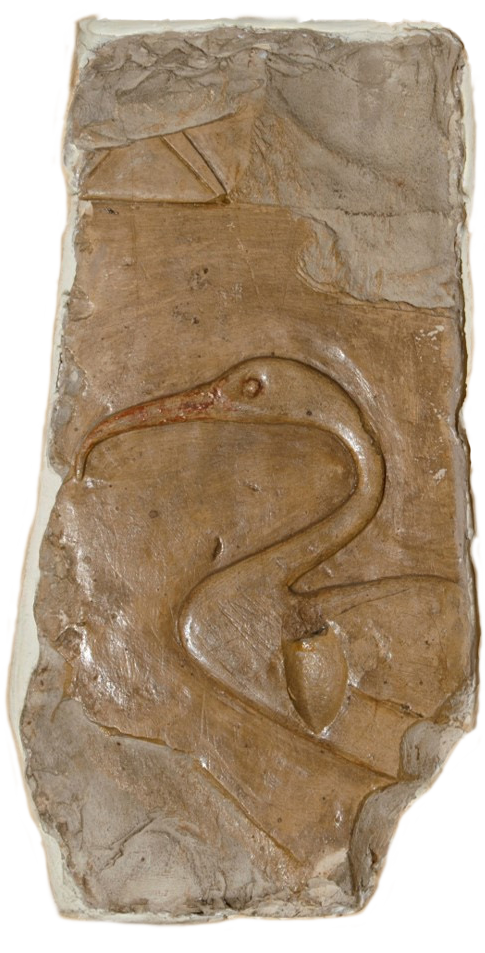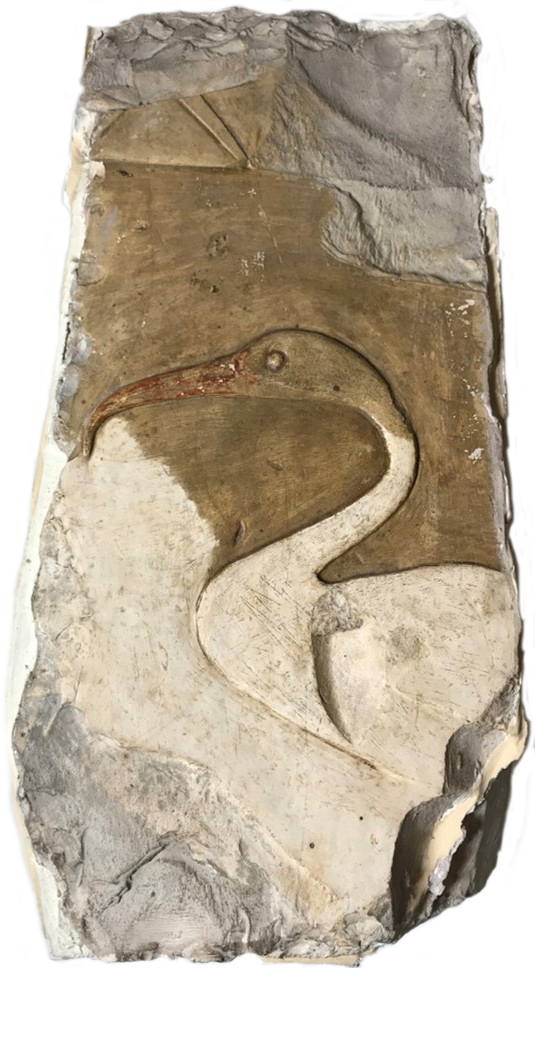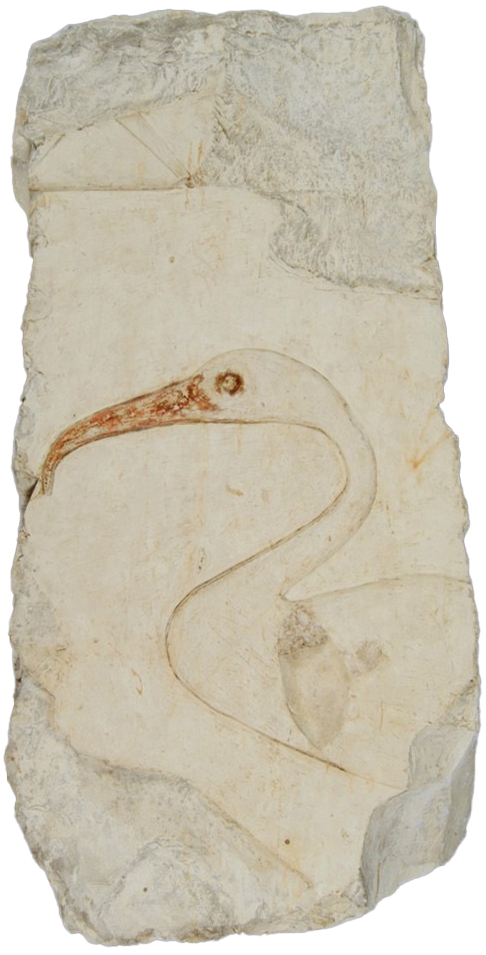Object Conservation
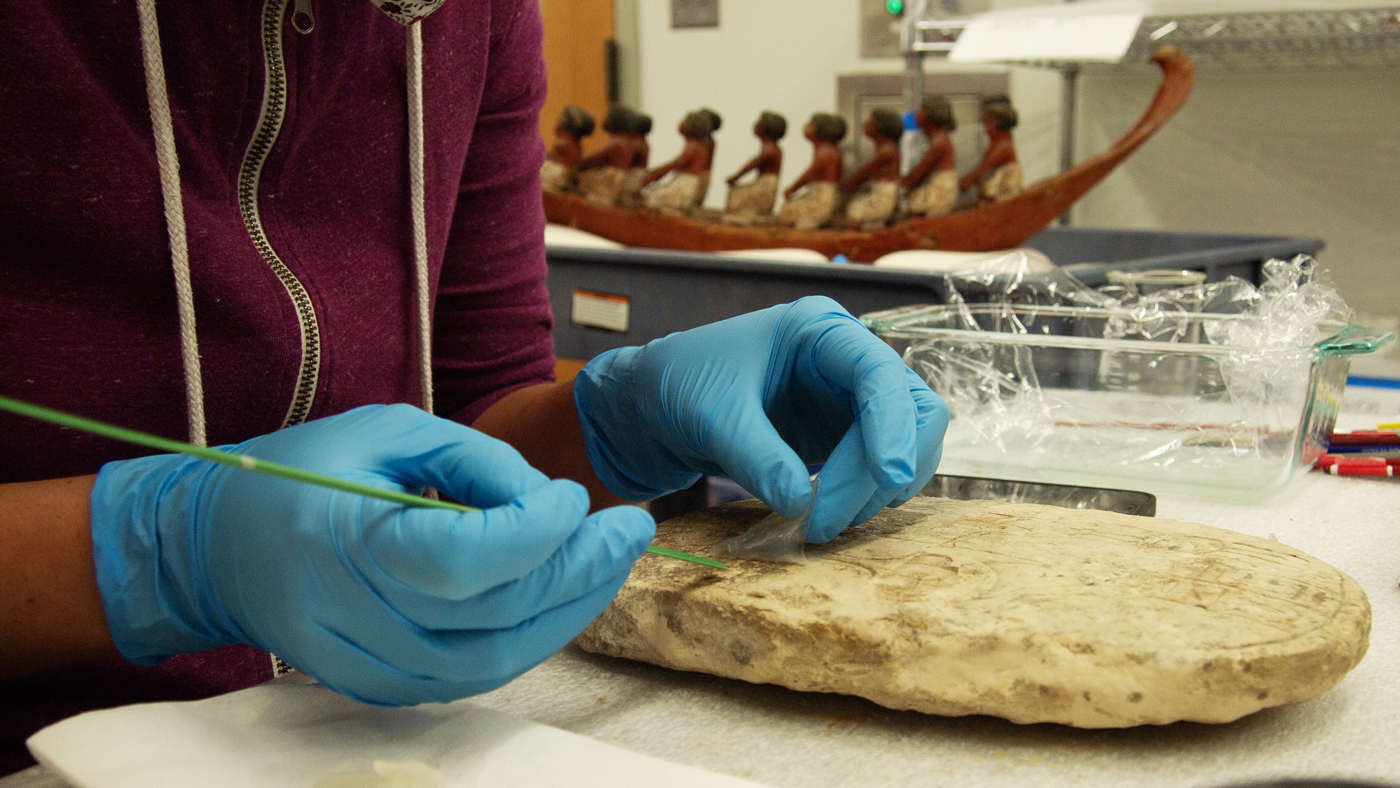

The Penn Museum's Conservation Department is responsible for the long-term care and preservation of the Museum's object collections.
Conservators review, treat, and set exhibition and traveling parameters for all objects going on exhibition or out on loan. They work with Collections staff to provide the best possible environment for the museum collections and serve as conservation consultants for Museum staff, researchers, students, and the public.
With collections as large as the Museum’s, it is a major undertaking to keep up with their conservation needs. Below are some of the activities the Conservation Department carries out.
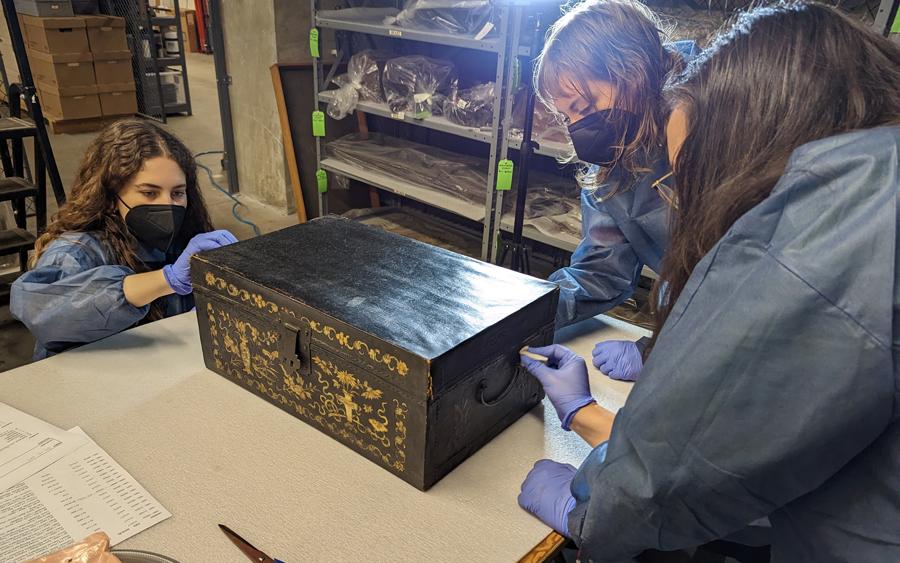
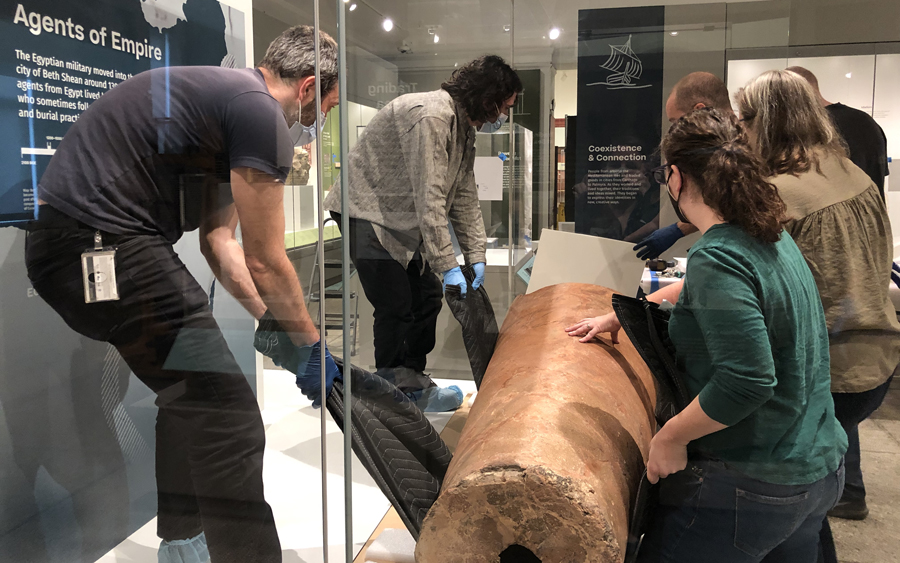
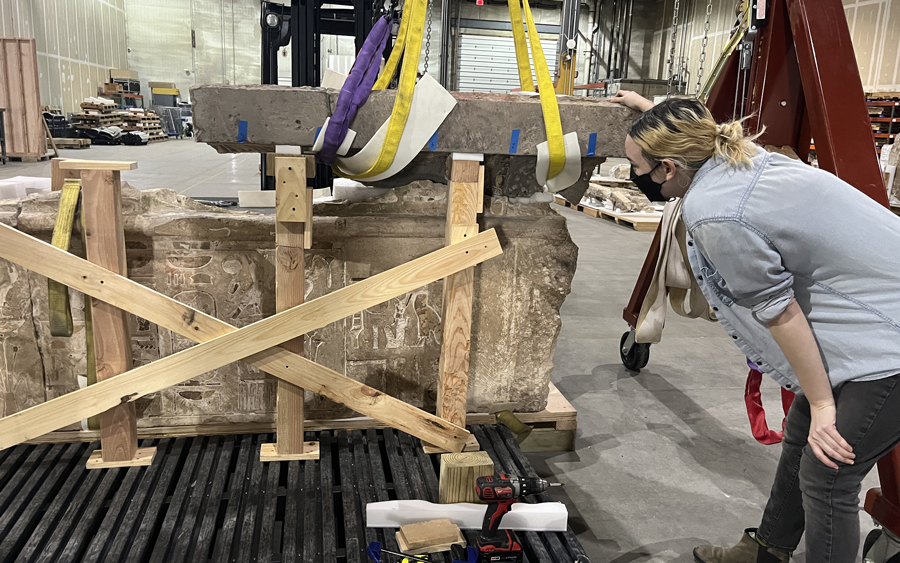
Activities that prevent damage or reduce risks to the collections are categorized under the umbrella of preventive conservation. All museum staff play a role in preventive conservation, with oversight of these preservation activities provided by the Conservation Department. Conservators work to ensure the stewardship of the museum’s collections through storage planning and maintenance; integrated pest management; environmental controls and monitoring; inspection and cleaning of objects on exhibit, by creating mounts for storage and handling; and by providing training to researchers and students that use the collections.
For every exhibition, Conservators work closely with the Curators and the Exhibitions and Preparations Departments to ensure that the objects selected will be displayed to their best advantage. This work begins long before the exhibition opens, with reviewing all the objects selected for display, ensuring that they can be displayed safely, setting guidelines on light intensity and duration, and providing input on mountmaking. As exhibition preparation continues, the Conservators are consulted on case materials and specifications and review all mount designs to ensure they provide the proper support without placing stress on any part of the object.
The greatest effort goes into the treatment of the objects. Each object slated for exhibition comes into the lab for documentation and whatever treatment is necessary to stabilize it and to show it at its best. Frequently the Conservators consult the Curators for information on how an object should look or be presented.
The Museum is currently beginning Phase 2 of a major renovation project, which will culminate in fully renovated and reimagined Ancient Egypt and Nubia Galleries. This is a massive undertaking, not just due to the richness of the collections from those areas, but for the sheer scale of some of the ‘objects’ being conserved (eg, an entire Old Kingdom mortuary chapel, and major elements from the Palace complex of the pharaoh Merenptah). To facilitate this work the Museum has established an off-site Conservation Lab Annex (CLA); an adapted warehouse fully equipped to handle oversize stone statuary and architecture.
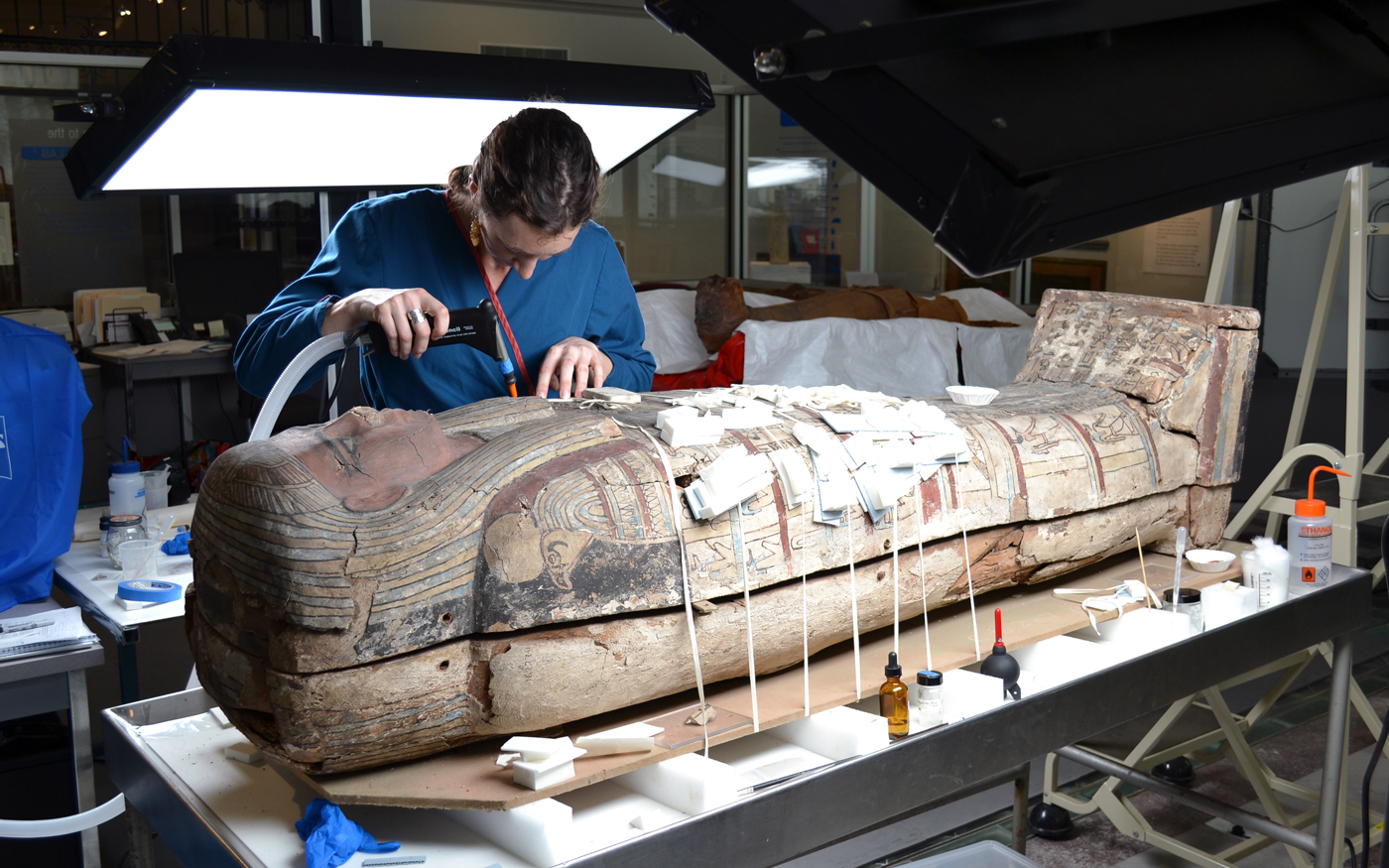
Discover how our conservators are preparing artifacts for display in the new galleries on the Artifact Lab blog.
Learn MoreIn keeping with the Museum’s dedication to education, the Conservation Department engages in training, education, and outreach at many levels.
Museum conservators lecture about conservation in a range of Penn classes. Students who become summer interns at the Museum are introduced to conservation as a field and may be accepted to work in the department during their internship.
Students interested in or applying for conservation graduate school can learn more about the field and whether it’s a good fit for them as Conservation Technicians in our department by working with professional conservators to learn the basics of the field. Graduate students studying conservation are required to do Curriculum Internships of 9-12 months working in a Museum to get experience. The Penn Museum has hosted many such Curriculum Interns, many of whom have gone on to prominence in the profession.
Working with the Learning and Community Engagement Department, the Conservation team offers weekend workshops for interested teens to learn about conservation in Museums.
From 2012 until 2023, the Conservation Department maintained a public lab where visitors could watch the conservation staff at work and (pre-pandemic) ask questions during specially scheduled hours. While the Artifact Lab is closing to the public in August 2023, the Artifact Lab Blog remains a great source of information about conservation at the Museum.
